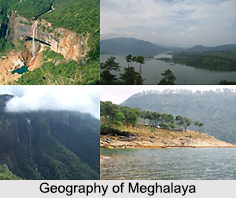 Origin of Brahmaputra River is in south-western Tibet as the Yarlung Tsangpo River. Brahmaputra River is one of the largest rivers in Asia. The total length of the river is about 2900 km. The river takes birth at the Mansarovar of the Himalayas, flows through Tibet, China, Burma, India and joins with River Ganga in Bangladesh. It flows across south-western Tibet and then it breaks through the Himalayas in great gorge. Its basin covers the areas of Tibet, China, India and Bangladesh. It is a trans-boundary river.
Origin of Brahmaputra River is in south-western Tibet as the Yarlung Tsangpo River. Brahmaputra River is one of the largest rivers in Asia. The total length of the river is about 2900 km. The river takes birth at the Mansarovar of the Himalayas, flows through Tibet, China, Burma, India and joins with River Ganga in Bangladesh. It flows across south-western Tibet and then it breaks through the Himalayas in great gorge. Its basin covers the areas of Tibet, China, India and Bangladesh. It is a trans-boundary river.
Etymology of Brahmaputra River
Brahmaputra River is also called "Tsangpo-Brahmaputra". In Tibet, the Brahmaputra River is known as "Yarlung Tsangpo River". In Arunachal Pradesh, it is known as "Dihang", in the Assam Valley as "Brahmaputra", in Bangladesh as the "Jamuna" and "Meghna" before emptying into the Bay of Bengal. The Sanskrit name for Brahmaputra is "Lauhitya". The word Brahmaputra means "Son of Brahma" and according to the Hindu mythology, it is a holy river. The biggest and the smallest river islands in the world are Majuli and Umandana which are formed along this river.
 Course of Brahmaputra River in India
Course of Brahmaputra River in India
Brahmaputra River enters India in the far north-eastern state of Arunachal Pradesh after travelling hundreds of miles over Tibet as the Tsangpo from its birthplace near the holy lake of Mansarovar. It is one of the world"s largest rivers, on the similar scale with the Indus, Mississippi and the Nile.
From its origin in south-western Tibet as the Yarlung Tsangpo River, it flows across southern Tibet to penetrate through the Himalayas in great gorges and into Arunachal Pradesh, flows south-west through the Assam Valley and then towards south through Bangladesh. There it converges with the River Ganga to form a vast delta. In Bangladesh, the river merges with the Ganga and divides into two the Hooghly River and Padma River. When it merges with the Ganges, it forms the world`s largest delta at the Sunderbans and finally empties into the Bay of Bengal.
The upper course of Brahmaputra River was unknown for a long time, and its identity with the Yarlung Tsangpo was only recognized by exploration in 1884-86. The lower reaches are sacred among the Hindus. Brahmaputra River is navigable along most of the river length. The river is prone to catastrophic flooding in spring when the Himalayan snows melt. It is also one of the few rivers in the world that exhibit a tidal influence.















